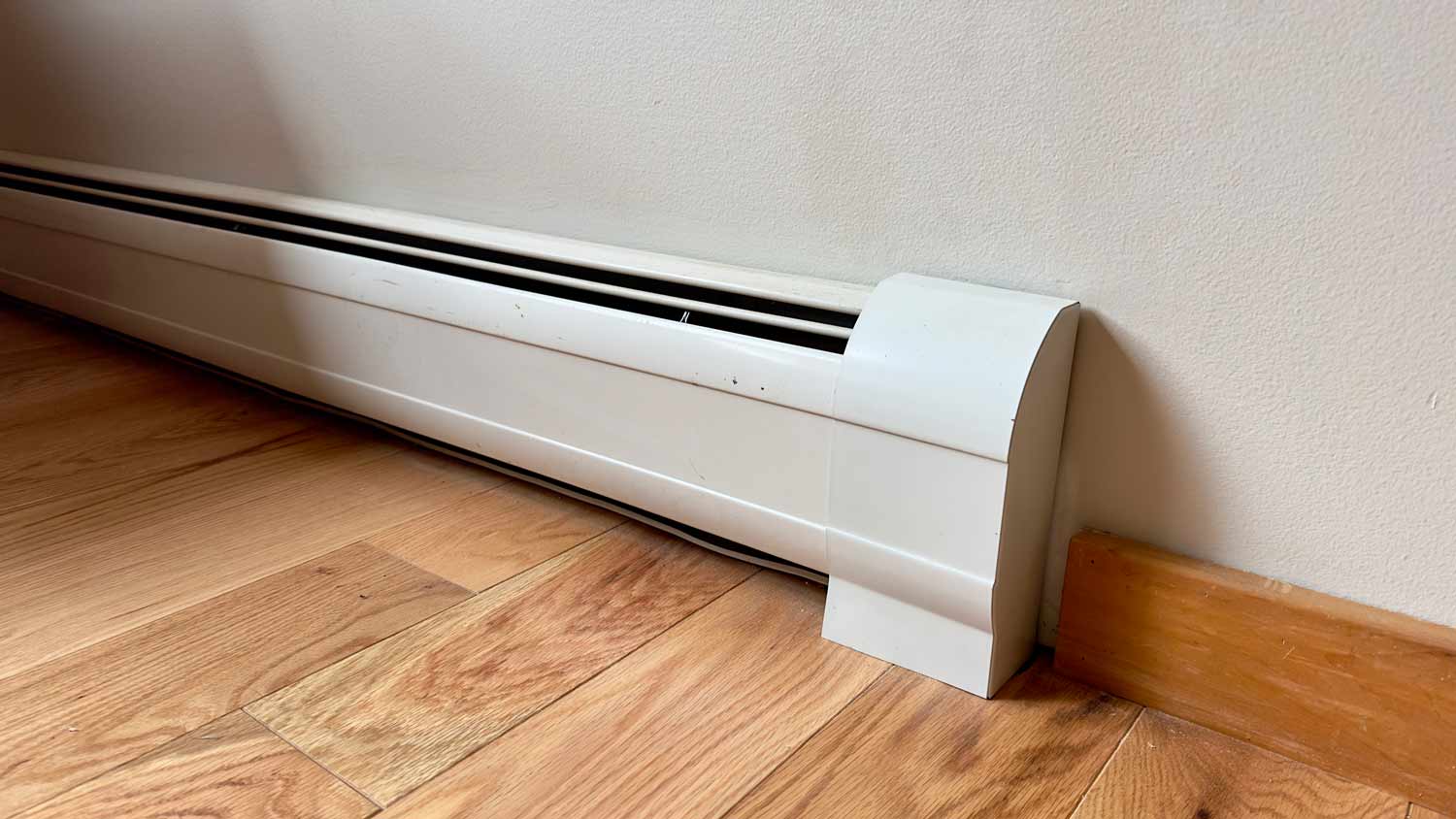
Average costs of HVAC inspections vary based on house size, location, and type of HVAC system. Follow our easy guide to gauge your home’s HVAC inspection cost.
Learn the basic steps for how to replace a baseboard heater


Whether you’re swapping out an outdated unit or upgrading to a more energy-efficient model, learning how to replace a baseboard heater is possible for the advanced-level DIYer. However, this project can be hazardous due to the required electrical work, so it’s best to hire a local baseboard installer. This guide will walk you through the basic removal and replacement process for baseboard heaters.


If you’re up for the DIY, carefully follow these steps to replace a baseboard heater.
Ensure your safety by switching off the circuit breaker for the baseboard heater at the main electrical panel. Tape over the breaker to prevent accidental reactivation. Use a non-contact voltage tester to confirm the power is off before moving on to the next step.
Use a screwdriver to loosen the screws securing the old heater to the wall, which are located at the sides or top of the heater. Before touching the heater, make sure it has cooled down completely.
Carefully remove the baseboard heater from the wall to expose the wiring. Locate the metal cable entering the back of the heater. Unscrew the metal plate holding the wiring in place. Disconnect the wire nuts joining the heater's wires to the home's electrical wiring, and release the ground wire from the grounding screw.
Position the new heater on the floor near where it will be installed. Find the wire box on the unit closest to the wall wires and remove the cover plate using a screwdriver. Pull the wires from inside the new unit to prepare for connection.
Following the same method as the old unit, connect the heater to the home’s wiring. Match black to black (or red) and white to white, securing the connections with wire nuts and electrical tape. Attach the ground wire to the grounding screw on the new heater and replace the metal plate.
Position the new heater on the wall and secure it using screws. Align the screws with the existing wall anchors for a snug fit.
Once everything is secure, turn the power back on at the breaker and turn on the baseboard heater to make sure it’s functioning properly.
If you’re not comfortable with learning how to replace a baseboard heater, it’s highly advisable to seek out a pro rather than attempting the DIY. The cost of installing a baseboard heater professionally is between $75 and $250 per hour for labor, plus the cost of the unit. Baseboard heater prices vary significantly, with costs ranging anywhere from $50 to $1,300. While you can save on labor by replacing a baseboard heater yourself, hiring a pro will ensure it’s installed safely and properly for maximum efficiency.
From average costs to expert advice, get all the answers you need to get your job done.

Average costs of HVAC inspections vary based on house size, location, and type of HVAC system. Follow our easy guide to gauge your home’s HVAC inspection cost.

When your window AC isn’t cutting it, but central AC is too expensive, installing a new ductless mini-split AC may be the cooling solution you’re looking for. Find out what a mini-split costs and how to hire the right pros to get the job done.

Discover the true window AC unit installation cost to learn about labor, permits, and ways to save on your window AC project.

Condensation on air vents suggests something is wrong with your HVAC system. Learn how to stop condensation on air vents through preventive measures.

When you notice hot and cold zones in your home, it pays to learn how to balance airflow in your ducts to even out the temperature.

Not sure who to hire to install radiant floor heating? Learn which pros handle radiant floor heating installation and how the work comes together.